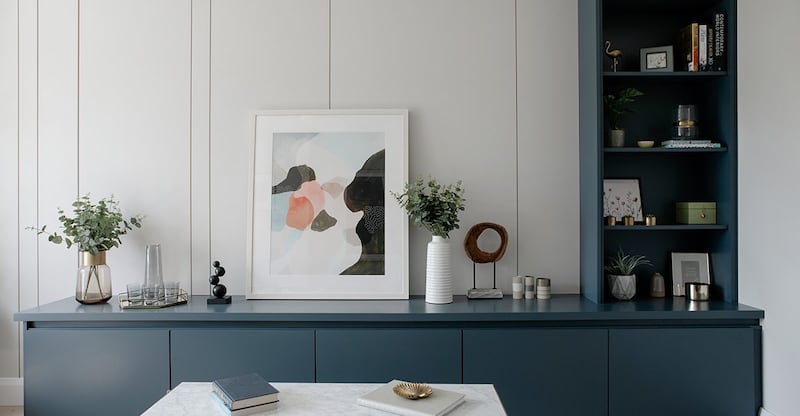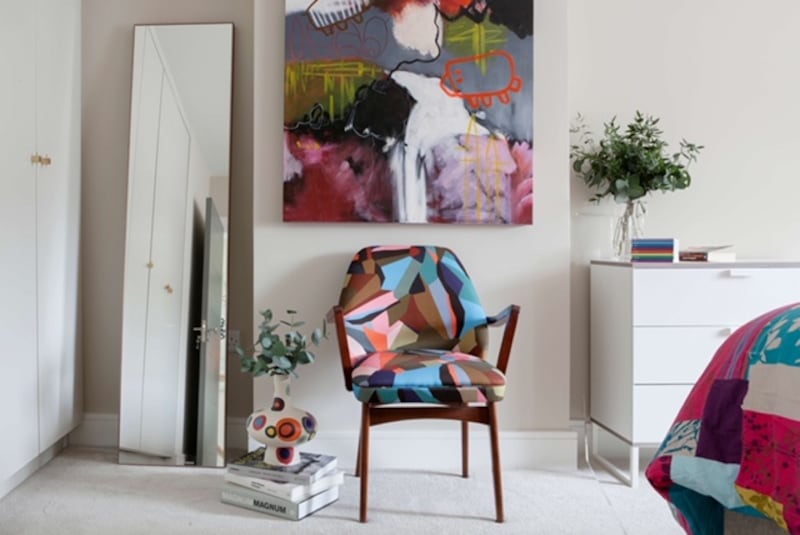No matter what your interior style preference, hanging the right piece of art will elevate your home and add instant personality. But buying art can intimidate people. They fear it’s an expensive pursuit, but this is not the case. Gallery owner Catherine O’Riordan of So Fine Art Editions has good advice on how to start and curate your own art collection.
Do your research
Knowledge is power, so spend some time researching before you invest. Research galleries via the internet and narrow down what artwork you respond to or moves you. Look at different kinds of art to get a feel for what you like. Do you prefer abstract versus figurative? Do you like bright, colourful shapes or muted landscapes? Once you've identified pieces you like, take a trip to visit the gallery to view the works.
“I think it’s best to visit galleries and see the works in the flesh,” says O’Riordan. “The gallery will give you the background to an artist’s career and information on their exhibitions.” There’s no need to feel intimidated when visiting a gallery. “If you are unsure of what you might want or what might work in a particular space, don’t be afraid to ask questions and get advice. Gallerists give excellent advice and have a great knowledge of the artists they represent. Do not feel intimidated and always ask questions,” says O’Riordan.
O’Riordan also recommends joining the galleries’ mailing lists. This way, you will be notified about private viewings and exhibitions. By attending these events you’ll have the opportunity to meet the artists.
Another idea is to invest in an art publication such as the Irish Arts Review. These publications are filled with articles on artists, trends and reviews of exhibitions. “You do not need to have a huge knowledge of fine art, and you never know – you may develop a passion,” says O’Riordan.


Build your collection over time
An art collection is something that should evolve gradually. It's not something you need to pull together all at once. "Focus on one main piece initially, then build up your collection over time. Buy what interests and engages you," she says. Nor should you limit yourself to just one medium. She advises also looking at photography, original fine art prints and wall ceramics and sculpture. "Buy pieces you love as you will be looking at it daily."
Sometimes less is more when it comes to creating an impact with art. “A few well-placed pieces can be more effective than just filling every space.”
Budget
Setting a budget is essential when making an investment in your home, and buying art is no different. Having said that, the budget for a beautiful artwork does not need to be as significant as you might think. "The idea that all art is expensive is a misconception," says O'Riordan.
“You can purchase an original artwork for as little as €100. Emerging artists’ works are very affordable compared with established artists.”
Consider investing in original fine art prints. These are not reproductions but are hand editioned etchings, lithographs or woodcuts. The artist or printmaker creates an original image on copper or stone and handprints a limited edition. Each print medium will give a different visual result, which makes them interesting to collect. They are more affordable than a painting, too, so you can buy something really special for €300. Other affordable options are unique works on paper, says O’Riordan. “Art is an investment for life and the value is looking at the piece every day and receiving joy.”
Commissioning a piece is not just for the rich and famous. “If you see an artwork you love, and it is sold, you can approach the artist or gallery to commission a similar work.” Bear in mind it will not be a replica of the original piece. When commissioning an artwork, communication is key, says O’Riordan: “Agree on all the details; composition, size, cost and lead time. It is no more expensive than buying a piece in the usual way and usually an artist will look for a deposit beforehand.”
Building a relationship
Once you've started your collection, it is possible to get advice about adding to it and curating what you have. O'Riordan advises building a relationship with a gallery. "They will advise on adding to your collection and give you guidance on things like size and what pieces will complement the space and other works you already own."
Talk to the galleries about the kinds of services they offer. “Some gallerists will bring works to your home to let you try them in your space and see how they work with the artworks you already have. Most galleries also offer framing and installation.”
Whether it’s your first time or you are adding to an existing collection, O’Riordan’s main advice is: “Take pleasure in the experience of looking at art, and there is no need to feel intimidated, take your time and trust your taste.”
Denise O’Connor is an architect and design consultant @optimisedesign














